Coilovers and air bags are two popular suspension upgrades. They not only transform the way your car rides and handles, but also change the way your car looks.
Choosing between the two may seem confusing at first, but as you learn more about how each upgrade works and what to expect from your car’s handling — it will make a lot more sense.
In this guide, we’ll take a deep look at air bags and coilovers along with the many benefits they offer to help you choose the right solution for your driving style.
Air Bags
As the name suggests, air bags are a lot like air balloons. Also known as “air ride” suspension, they’re a type of air suspension system that replaces your car’s OEM suspension, and their main goal is to support your car’s weight.
Air bags connect to an air compressor and an air reservoir. With the help of this compressor, air bags inflate which results in a raised car height.
As for how they make your car ride and handle, more air means a stiffer ride while less air makes for a soft ride.
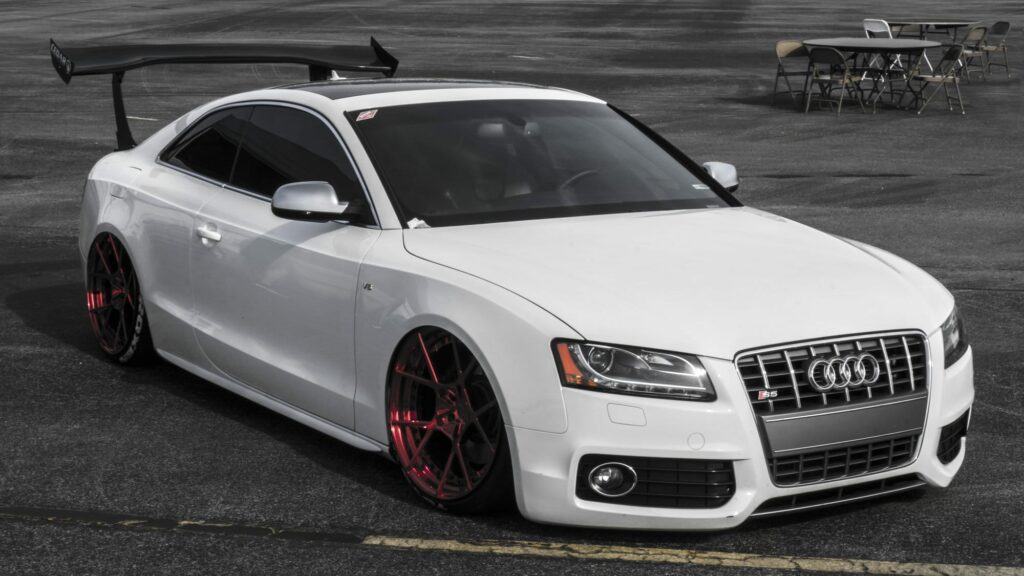
By using either a control unit inside the car or a Bluetooth app, you can easily inflate or deflate the bags through the compressor, which lets you easily adjust to your desired ride height without any hassle. When bags are deflated, your car lowers to the ground.
Pros
- Easily adjustable ride height
- Delivers a smooth ride
- Can carry a heavy load
- Can be used before maintenance, making it easier to drive onto car ramps
Cons
- More expensive than other suspension modifications
- They don’t last as long as coilovers or lowering springs
- Few air ride kits can match the performance of coilovers
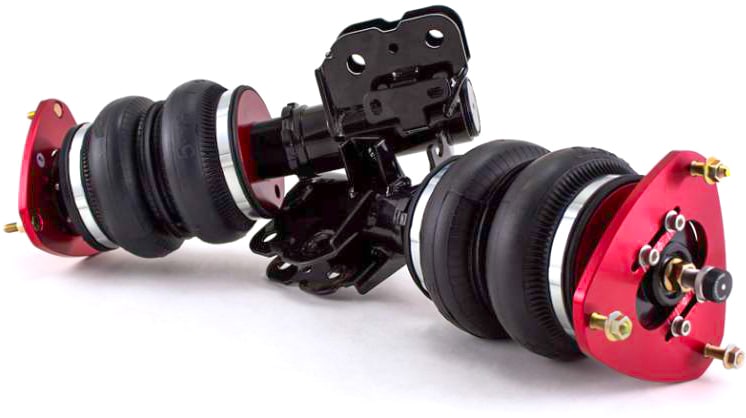
Coilovers
Coilovers are suspension components that prevent your car from scraping the road as you drive.
The mechanism is simple — a coiled spring surrounds the vehicle’s damper and both these components work together to absorb impact from the wheels — especially when your car goes over bumps in the road.
Depending on the spring constant that the manufacturer ships your coilovers with, you’ll either enjoy a stiff or a soft ride.
Aside from the performance benefits they offer, most drivers use them to raise or lower their cars.
Pros
- Perfect for improving handling
- More durable when compared to air suspension systems
- A wide range of adjustment, including height, compression, camber, caster and more
Cons
- Often a stiffer ride
- Ride height is “static”, meaning it cannot be adjusted by the flip of a switch
- For this reason, you may need specialized equipment such as a floor jack for lowered cars to do basic maintenance
- Adjusting ride height requires tools and removal of wheels
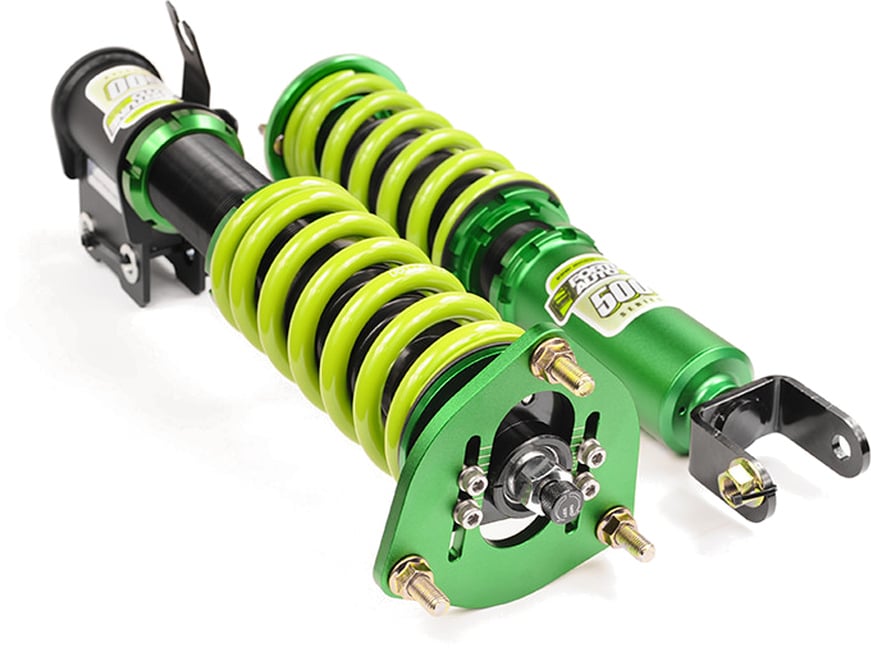
Air Suspension vs Coilovers: An In-Depth Look
While both air bags and coilovers are a type of suspension component that serve a similar purpose, the difference lies in their mechanism and the ultimate handling applications they work best in.
One gives you more adjustability while the other offers more durability, precision, and resistance against wear and tear. Here’s an in-depth look at the air suspension vs coilovers debate.
Aesthetics
Let’s be honest. If you’re installing airbags, it’s not just about the comfort, but also the incredibly slammed look that’s bound to turn heads. Who doesn’t like the way their car looks when lowered all the way to the ground after all?
If you’re a motorhead that frequents car events, air bags are perfect for that type of thing as they can literally be done with the push of a button.
Coilovers on the other hand, are much more work to raise and lower your car.
Improved Handling
If you’re looking to improve your car’s handling, coilovers are the way to go.
They’re tuned to reduce a certain amount of body roll which makes them perfect if you want to drift, take them to a track day, or even take them out for a day of spirited driving.
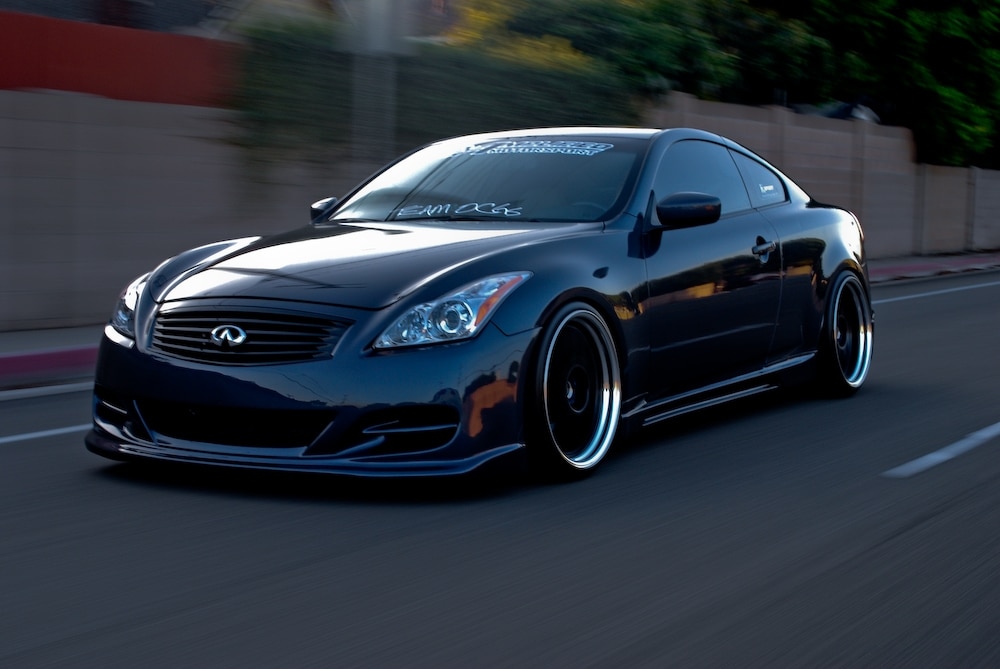
Air ride suspension, on the other hand, is more suitable for daily drivers. They enable your car to function smoothly and provide the driver a comfy ride.
Ride Quality
This is exactly where air bags shine. Depending on the spring rate and how the shocks are valved, coilovers may seem harsher over bumps. Bags seamlessly glide right over them and provide a smoother ride.
There’s also the fact that with air suspension, you can adjust your car’s ride height anywhere, anytime — all at a press of a button.
With bags, you can also add additional weight to your car without it bottoming out or feeling unbalanced. In fact, the raised car height will prevent the rear end of your car from sagging and consequently prevent tire wear and tear too.
Although you can put coilovers on a daily driver, it’s not going to be as comfortable as a car with air suspension. While coilovers can also help support an increased load, they’re mainly used to improve performance.
Track Use
Coilovers are predominantly used in motorsports due to their predictable behavior.
When you’re driving at high speeds, you’re going to need exceptional handling and control while cornering — which is what coilovers do best.
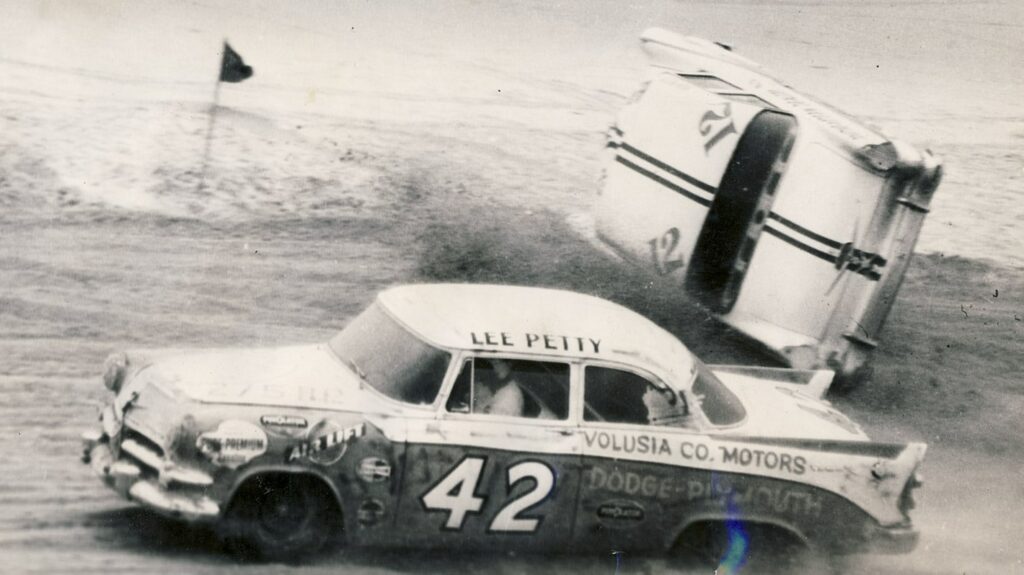
There was a time that air bags were frequently used in NASCAR given their ability to bear heavy load without sacrificing balance or the way the car rides. But drivers soon switched to coilovers because they wanted the predictable and reliable performance that they offered.
Multi-rate springs provide a suspension setup that adjusts to handle various scenarios without you needing to physically adjust them. That’s because they’re custom wound to resist different amounts of compressive force. You just can’t expect bags to perform the same way.
Another reason why coilovers are great for track days is that they’re more durable than air suspension systems.
Since racetracks have uneven roads and changing surfaces which causes increased heat in your suspension system, it can cause your bags to rupture unexpectedly.
In addition to all of this, when comparing bags with coilovers for track use, it’s obvious that coilovers allow you to customize several performance attributes of your suspension system.
This includes rebound, damping, compression, and the spring itself. All of those affect how your car feels on the track.
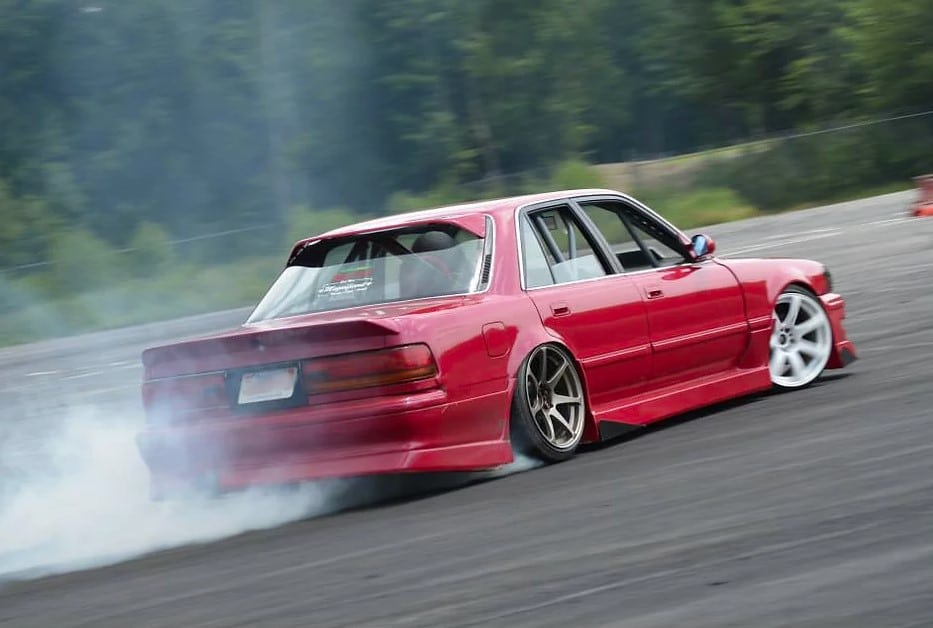
Air Ride or Coilovers: Purpose Matters
In the end, it all comes down to what you want out of your car’s handling and performance and where you plan to drive it. Your budget may also affect your choice especially when you see that air suspension kitss are significantly more expensive.
If you want a kit that’s going to improve your overall performance, choose coilovers. Whether you’re on the street or track, you’ll definitely notice the superior predictability and handling that they bring to the table.
But if you want a smoother ride, unmatched adjustability, and a slammed look — bags are the way to go. They’ll also handle more weight without making your car feel unbalanced.
Just don’t be surprised to find that air bags wear out quicker than coilovers, so maintaining or replacing them can become an expensive endeavor.
What’s your experience with air ride vs coilovers? How has your car’s handling and the way it rides changed since upgrading? Let us know what you’re running in the comments below!
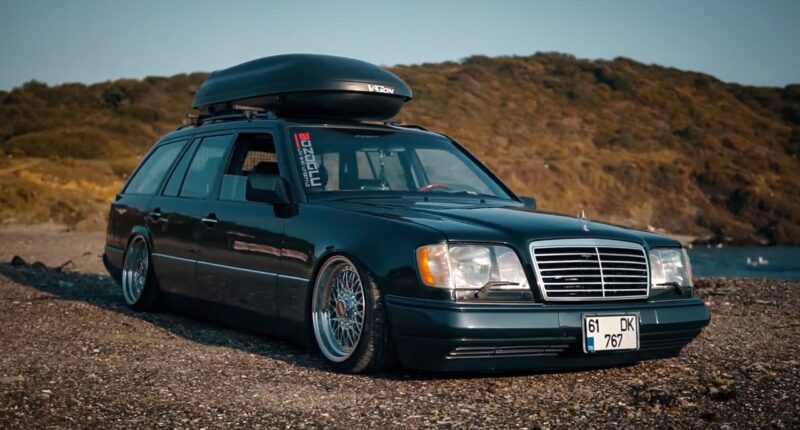

3 comments
I have lowered many cars throughout my endeavors in the low rider seen and have always done adjustable coil overs, weather it was any one of my many beautiful BMWs or even my old school classics like my very first low rider, my 1960 Chevy Impala. The coil overs always preformed well no matter what. Daily drivers or track only race cars. Well…. I just picked up a full size Chevy truck (2010 Silverado 1500) and want to bag it out. I have no experience with the air suspension seen and don’t know where to start…. I am just looking to be able to do some front, back and side to side. But also want a decent bag that wont blow out so quickly and that has speed on raising up. Does anyone have any suggestions for me on what brand to go with and where to find these proper products at and some tips on doing so? Thanks for all the help already!
AirTekk seems to be a pretty reputable brand. They respond very quickly and have full installation videos that give step by step instructions on all of their kits. I’ve been thinking about ordering from them
Owned an RS4 on airlift V2 and it would knock and bottom out driving hard on cambered roads. Flat smooth no bother. I do not understand why owners are bagging cars with adaptive suspension, it makes zero sense to me. So my RS Focus would be redundant in drift and track and goes against the very nature of the car and it’s design. If you like hanging about in parking lots at dangerous unsanctioned events then choose bags. If you drive like me if in doubt flat out, then go with coilovers. Bags are for posers.